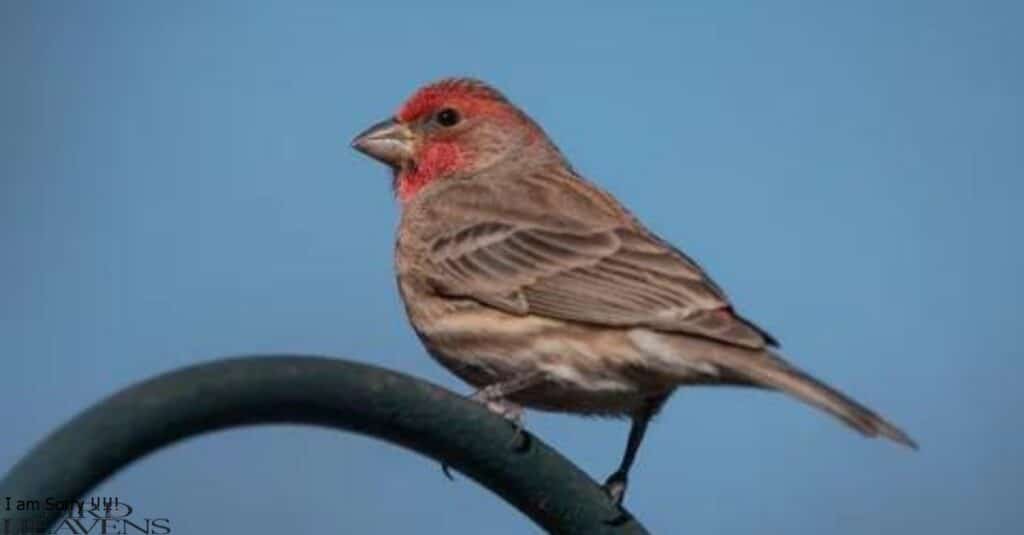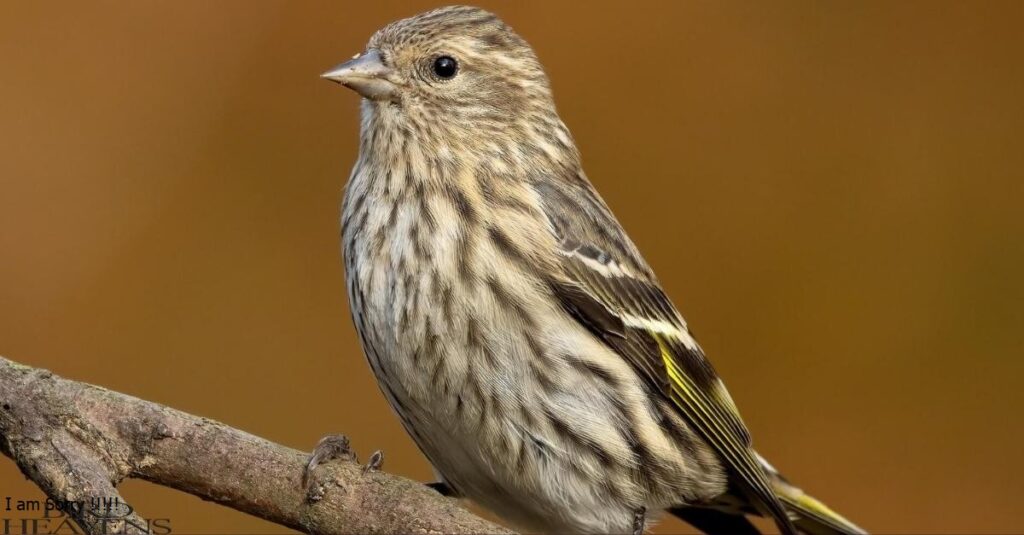Finches In Texas – The Complete Guide To Texas Finches
Finches in Texas offer a diverse array of species, from common residents like the House Finch and American Goldfinch to seasonal visitors such as the Purple Finch and Pine Siskin.
Texas provides ideal habitats for these seed-eating songbirds, ranging from urban backyards to state parks. Birders can enjoy year-round finch watching, with opportunities to spot rare species like the Red Crossbill during irruption years.
Conservation efforts and backyard feeding can help support these charming feathered friends.
The Finch Family:
Before we delve into the specific types of finches you’ll encounter in Texas, let’s take a moment to understand what makes a finch a finch.
These small, seed-eating songbirds belong to the family Fringillidae, characterized by their conical beaks perfectly adapted for cracking open seeds.
Finches come in a variety of sizes and colors, but they all share certain traits:
- Strong, stubby beaks
- Notched tails
- Melodious songs
- Preference for seeds and fruits
North America boasts an impressive diversity of finch species, with Texas being a hotspot for both year-round residents and seasonal visitors. Let’s explore the most common finches in Texas that you’re likely to encounter.
Common Finch Species in Texas
House Finch
The House Finch is perhaps the most ubiquitous finch species in Texas. These adaptable birds have made themselves at home in urban and suburban areas, thriving alongside human habitation.

Identification tips:
- Males: Rosy red head, breast, and rump
- Females: Grayish-brown with streaked underparts
- Both sexes: Brown wings and tail
Interesting behaviors:
- Courtship feeding: Males feed females during breeding season
- Group foraging: Often seen in small flocks at feeders
- Nest reuse: May use the same nest for multiple broods
The Texas House Finch population has exploded since its introduction to the eastern United States in the 1940s. Today, they’re a common sight at backyard feeders across the state.
American Goldfinch
The American Goldfinch is a favorite among Texas birders for its striking yellow plumage and acrobatic feeding habits.

Seasonal changes in plumage:
| Season | Male | Female |
| Summer | Bright yellow with black cap and wings | Duller olive-yellow |
| Winter | Dull brownish-olive | Similar to male, slightly paler |
Preferred habitats in Texas:
- Open fields with thistle and sunflowers
- Woodland edges
- Suburban gardens with native plants
These cheerful birds are often seen hanging upside down on seed heads, showcasing their agility and charm.
Lesser Goldfinch
The Lesser Goldfinch is a smaller cousin of the American Goldfinch, found predominantly in the western and central parts of Texas.

Distinguishing features:
- Males: Black cap, yellow underparts, dark wings with white patches
- Females: Olive-green above, yellowish below
Diet and foraging habits:
These tiny finches have a particular fondness for sunflower seeds and nyjer thistle. They’re often seen in small flocks, flitting between feeders and natural food sources.
The Lesser Goldfinch’s sweet, canary-like song is a delightful addition to any Texas backyard. – John Baumgartner, Texas Parks and Wildlife ornithologist
Pine Siskin
The Pine Siskin is an irruptive species, meaning its presence in Texas can vary greatly from year to year depending on food availability in its northern breeding grounds.

Identification challenges:
Pine Siskins can be tricky to identify due to their similarity to female House Finches. Look for these key features:
- Heavily streaked body
- Yellow edging on wings and tail
- Thin, pointed beak
When and where to find them in Texas:
- Winter months (typically October to April)
- Coniferous forests in East Texas
- Mixed flocks at backyard feeders during irruption years
You Might Like >>Crane Vs. Heron
Purple Finch
The Purple Finch is a winter visitor to Texas, bringing a splash of color to the colder months.

Key identification marks:
- Males: Raspberry red head and breast
- Females: Bold white eyebrow and streaked underparts
Differences from House Finch:
Many birders struggle to differentiate Purple Finches from House Finches. Here’s a quick comparison:
| Feature | Purple Finch | House Finch |
| Color | Raspberry red | Bright red |
| Head | Fully colored | Color doesn’t extend past crown |
| Beak | Larger, curved upper mandible | Smaller, straighter |
Rare and Occasional Finch Visitors
While the previously mentioned species are relatively common, Texas occasionally plays host to some rarer finch visitors.
Cassin’s Finch
The Cassin’s Finch is an uncommon sight in Texas, typically found in the western parts of the state during winter.

Identification tips:
- Males: Rosy red crown and breast, brown back
- Females: Finely streaked underparts, lack bold facial markings
When and where to spot them:
- Winter months in the Trans-Pecos region
- Look for them in pine-oak woodlands and juniper scrub
Red Crossbill
The Red Crossbill is a fascinating species known for its uniquely crossed bill tips, an adaptation for extracting seeds from conifer cones.

Unique beak adaptation:
The crossed bill allows these finches to pry open pine cones with ease, accessing seeds that other birds can’t reach.
Irregular appearances in Texas:
Red Crossbills are nomadic, following cone crops. They may appear in Texas during irruption years, typically in the eastern parts of the state where pine forests are prevalent.
You Might Like >>Herons In Michigan
Real-Life Case Study: The Great Texas Finch Irruption of 2020
In the winter of 2020, Texas birders experienced an extraordinary event known as the Great Texas Finch Irruption.
Unusual numbers of Pine Siskins, Purple Finches, and rare Red Crossbills migrated into the state, far beyond their typical ranges.
This phenomenon was caused by poor conifer seed crops in northern boreal forests and unseasonably cold weather patterns that pushed the birds southward.
Impact on Texas Ecosystems:
Backyard feeders across Texas were flooded with finches, with birders reporting Red Crossbills as far south as Houston—an extremely rare sighting. Pine Siskin numbers surged by over 300% compared to previous years.
The influx had mixed effects on the local ecosystems, contributing to increased seed dispersal for native plants but also causing temporary seed shortages that affected other bird populations.
Citizen Science in Action:
The Texas Ornithological Society responded by mobilizing hundreds of volunteers to document this rare event.
The data collected by these citizen scientists offered valuable insights into finch migration patterns and population dynamics, highlighting the essential role of public participation in wildlife monitoring.
Lessons for Conservation:
The Great Texas Finch Irruption of 2020 emphasized the importance of preserving diverse habitats and the need for adaptable conservation strategies.
This event demonstrated how sudden wildlife movements can have far-reaching impacts on local ecosystems, reinforcing the role of citizen science in understanding and managing such occurrences.
Finch Behavior and Ecology
Understanding finch behavior can greatly enhance your bird watching experience. Let’s explore some key aspects of finch ecology in Texas.
Feeding Habits and Preferences:
Finches in Texas have diverse feeding preferences, but most are primarily seed-eaters. Here’s a breakdown of favorite foods for common Texas finches:
- House Finch: Sunflower seeds, safflower seeds, fruit
- American Goldfinch: Nyjer thistle, sunflower seeds, native seeds (e.g., coneflower, aster)
- Lesser Goldfinch: Sunflower seeds, native plant seeds
- Pine Siskin: Conifer seeds, nyjer thistle, sunflower chips
- Purple Finch: Sunflower seeds, millet, buds, and berries
Nesting and Breeding in Texas:
Finch nesting habits vary by species, but most build cup-shaped nests in trees or shrubs. Here’s a quick overview:
- House Finch: Breeds March to August, often in artificial structures
- American Goldfinch: Late breeders, typically nesting from June to September
- Lesser Goldfinch: Breeds year-round in Texas, with peak activity in spring and summer
- Pine Siskin: Rarely breeds in Texas, primarily a winter visitor
- Purple Finch: Does not breed in Texas, only present during winter months
Finch Vocalizations:
Finches are known for their melodious songs and varied calls. Learning to identify finches by sound can greatly enhance your birding skills. Here are some distinctive vocalizations:
- House Finch: A warbling song with a rising inflection at the end
- American Goldfinch: A series of twitters and warbles, often given in flight
- Lesser Goldfinch: A complex, canary-like song with varied phrases
- Pine Siskin: A buzzy “zree” call, often in flight
- Purple Finch: A rich, warbling song, more musical than the House Finch
You Might Like >>How Long Do Quail Live
Best Spots for Finch Watching in Texas
Texas offers numerous locations for observing finches in their natural habitats. Here are some top spots:
- Big Bend National Park: Great for spotting Cassin’s Finch and other western species
- Davis Mountains State Park: Excellent for observing montane finch species
- Hagerman National Wildlife Refuge: Winter hotspot for American Goldfinches and Purple Finches
- Lost Maples State Natural Area: Good for year-round finch watching, including Lesser Goldfinches
- Sabine Woods: East Texas hotspot for migrating and wintering finches
Attracting Finches to Your Texas Backyard
Want to bring the joy of finch watching to your own backyard? Here are some tips:
- Plant native species: Texas lantana, sunflowers, and native thistles are finch favorites
- Offer diverse seeds: Nyjer thistle, sunflower seeds, and safflower seeds will attract a variety of finches
- Provide fresh water: A shallow birdbath or dripping water feature can be irresistible to finches
- Leave some weeds: Finches love to feed on the seeds of dandelions and other common “weeds”
Finch Conservation in Texas
While many finch species are doing well in Texas, others face challenges. Here are some conservation issues and efforts:
Current challenges:
- Habitat loss due to urbanization and agriculture
- Climate change affecting food sources and migration patterns
- Window collisions in urban areas
Conservation efforts:
- Texas Parks and Wildlife Department’s nongame and rare species program
- Audubon Texas’s Important Bird Areas initiative
- Citizen science projects like Project FeederWatch
How you can help:
- Participate in bird counts and surveys
- Create bird-friendly habitats in your yard
- Support conservation organizations
- Advocate for bird-friendly policies in your community
You Might Like >>Small Black Bird With White Belly
Conclusion:
From the House Finch to the Red Crossbill, Texas offers a wealth of finch species to discover and enjoy.
Whether you’re watching goldfinches at your backyard feeder or searching for rare visitors in the Davis Mountains, the world of Texas finches is sure to captivate and inspire.
So grab your binoculars, pack some sunflower seeds, and head out to explore the diverse and delightful finches that call the Lone Star State home. Happy birding!

Andrew Paul is a renowned ornithologist and founder of Bird Heavens. With my extensive expertise in bird behavior and habitat preservation,I will insightful content on species identification and conservation.My Future plans include interactive workshops and online courses to foster a global community of bird enthusiasts committed to conservation and appreciating avian life. Join me at Bird Heavens







